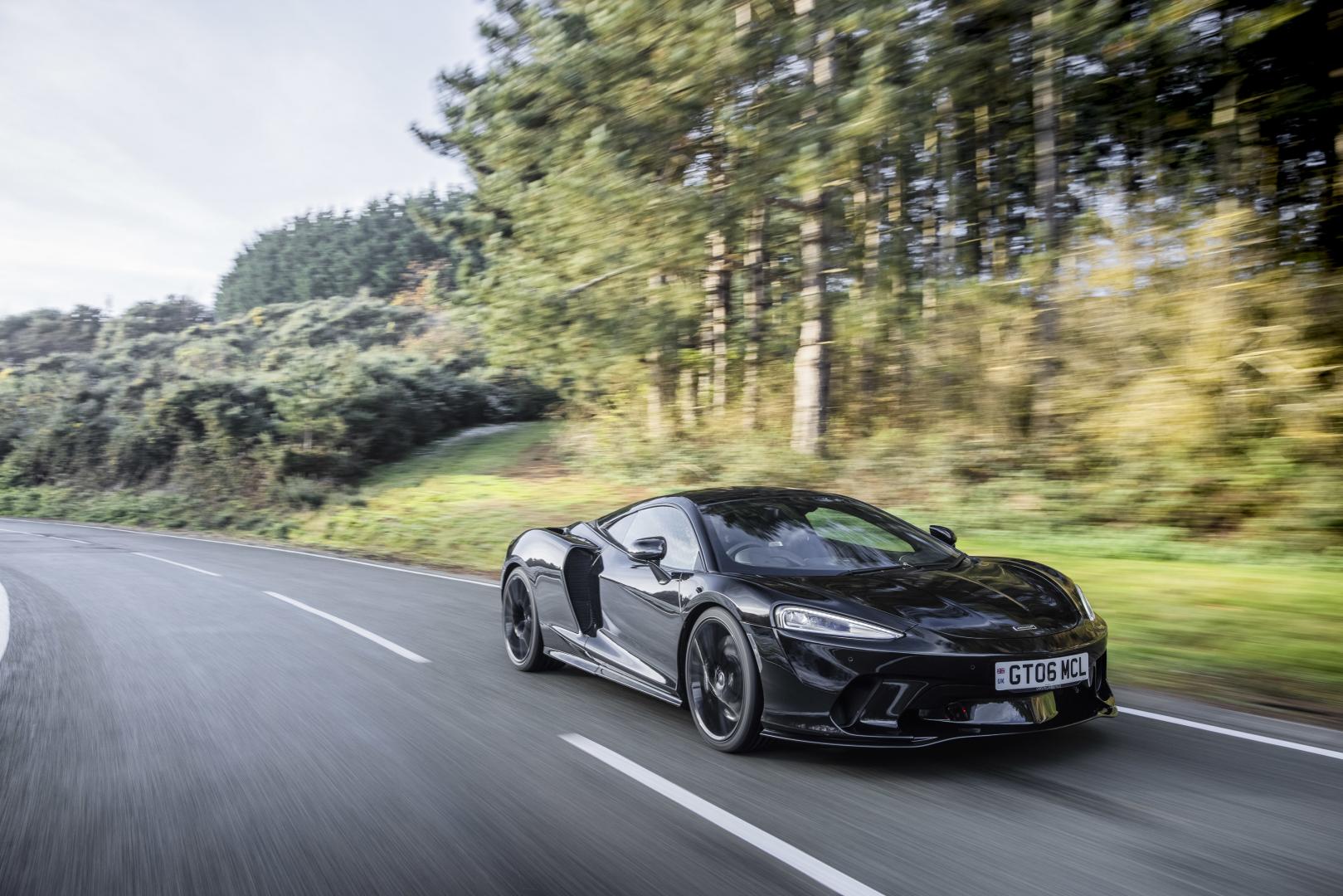Ian Lamming is reacquainted with the merits of two mighty McLarens
MY left foot is on the brake and the revs rise to a crescendo as my right boot buries the accelerator into the floor.
Knuckles turn white as the McLaren prepares to use launch control and I grip the uncluttered wheel for grim life. Release the brake and the rear end of the GT squirms as it seeks to find grip on the cold, damp, mile run at Millbrook testing ground in Bedfordshire.
If I’d had time to notice, 62mph would have been reached in just 3.2 seconds, which is just about too quick to register when you are already heading towards three figure speeds. And as the GT gets into its stride, 120mph on the clock, it is time to think about braking, which I am happy to do to equally rapid effect. This is brutal and not the way cars are meant to be driven on our roads but it’s a fantastic opportunity to sample what McLarens are capable of doing.
On the high speed bowl it is more about considering the GT’s ability to cruise at 120mph than anything else. Accelerating hard from the entry slip road it has topped 100mph even before lane four has been reached. A gentle press of the accelerator pushes it forward to 120mph where it is happy to sit on the concrete, banked, two miles oval. Engine, wind and road noise are surprisingly masked proving that McLaren engineers have insulated the car well.
GT remans a super-sleek supercar and packs a 620PS wallop. But driver and passengers are more cosseted and you could as easily drive it to the shops as the South of France, with 570 litres of space front and aft for your shopping, luggage, even golf clubs. Ride is sophisticated and controlled but comfortable too.
On the proving ground’s Alpine circuit, hairpins and awkward cambers do nothing to spoil the ride or trouble the car. Even a death-defying pheasant who walks into the McLaren’s path lives to fly another day thanks to immense braking prowess. It steers sharply and grips well and is unfussed in these challenging climes.
This is back-to-back testing and GT gives way to the 720S leaving a rosy glow for the former and salivating anticipation for the latter. The 720S is now five years old but who cares as it continues to set the standards that other supercars can only dream off. It remains the lightest and the quickest, its sensual lines never seeming to date.
It monsters the mile run hitting 140mph but more impressive still is the braking which uses the rear spoiler as an air brake to restore the balance of the car and take the weight off the nose and hence the steering wheels. There’s no fighting to keep a straight line, it just stops.
Around the Alpine circuit it feels light, razor sharp and rapid yet it also feels manageable and in complete control with no hint that grip might be below what you would hope because of the weather conditions. It sticks in every bend and blips its engine when you brake hard into them. Its handling is peerless and yet the ride is also forgiving and compliant thanks to hi-tech proactive chassis control and the rigidity of its carbon fibre tub.
All too soon the test is over and it is time to process what has occurred. Driving the McLarens is a salutary reminder of the brand’s supreme ability to makes stunning drivers’ cars. It is also a taste of what is to come as McLaren prepares to unleash Artura, a V6 petrol/hybrid, and also showcase its technology in the 149-build-only, £1.4m, carbon fibre, open cockpit Elva, a car so beautiful it should be in a gallery for all to enjoy.
McLaren aesthetics are based on a teardrop, the most efficient shape according to nature and an appropriate one too as one starts to form in my eye as this super car experience comes to an end.
Fact File
McLaren 720S
Engine: 4.0 litre V8
Power: 720PS
0-60mph: 2.8 secs
Top speed: 212mph
Combined MPG: 26.4
Transmission: seven-speed auto
CO2 g/km: 276
Price: £239,230.00
McLaren GT
Engine: 4.0 litre V8
Power: 620PS
0-60mph: 3.1 secs
Top speed: 203mph
Combined MPG: 26.2
Transmission: seven-speed auto
CO2 g/km: 245
Price: £165,230.00







